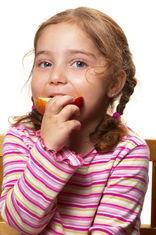
The World Cancer Research Fund says some 80 per cent of children in England eat less than the recommended five portions, increasing their risk of cancer.
While the recession and shrinking shopping budgets play a factor in this, there is also the issue of children simply refusing to eat what is good for them.
The international food behaviour research journal Appetite recently published a report showing children eat more fruit and vegetables if presented in a ‘fun’ way. Supermarkets and producers have long been aware of the need to attract young people into the category and there are a number of products that are attempting to do this by playing with formats.
Tropicana launched its Tropolis range, a blend of real fruit but in a squeezable pouch, in America last year. The product is aimed at the lunchbox market and the packaging is designed specifically for children to open easily.
The pre-prepared market is another way for parents to fill their children’s lunchboxes with nutrition. However, price is inevitably a barrier, something supermarket chain Asda is aware of. Rick Bourne, Asda’s category director for fresh produce, says the business is working on pricing for prepared fruit. “We do see spikes of demand at Back to School time, with lunchboxes and all that sort of thing,” he says. “So there is clearly a need for a children’s style product, such as smaller fruit, prepared produce etc, which helps mums to think about that. Our prepared fruit business is phenomenal - we have a 20 per cent share of prepared fruit and we’ve decided to make that very affordable for our customers.”
Sainsbury’s is another supermarket investing in the prepared fruit market, with the launch of four new products, including pineapple and melon fingers, melon and grape, and pear and apple slices, which are of appeal to young consumers.
It was also one of the first supermarkets in the UK to launch special packaging that specifically appeals to youngsters for non-prepared fruit - in this case Marvel comics. “Since we launched the Marvel soft citrus, we have seen new customers in the category,” explains a spokesman.
“While there is no strong evidence that the Marvel brand is the key driver, the use of a character’s labels in each fruit makes the line an interactive option with children swapping or collecting them.”
Sally Preston, founder and managing director of The Kid’s Food Co, says the snacking market for children is a growing one with many opportunities for the right product.
“There is actually a lack of real fruit snacks in the lunchbox market,” she explains. “There is a perception that parents will not pay more than 40p for a snack but we believe that’s not the case. Mothers will pay more for the right product.”
Preston, a former food technician for Marks & Spencer, says the research she has gathered agrees with the study in the Appetite journal, that children are more likely to eat fruit if it is in a fun format. As part of its Kiddylicious range, the company offers snacks such as Smoothie Melts that are made from 100 per cent real fruit.
“Children want flavour and texture and if you can deliver that with a real fruit snack then hopefully they will then go on to enjoy the contents of a fruit bowl.” -



